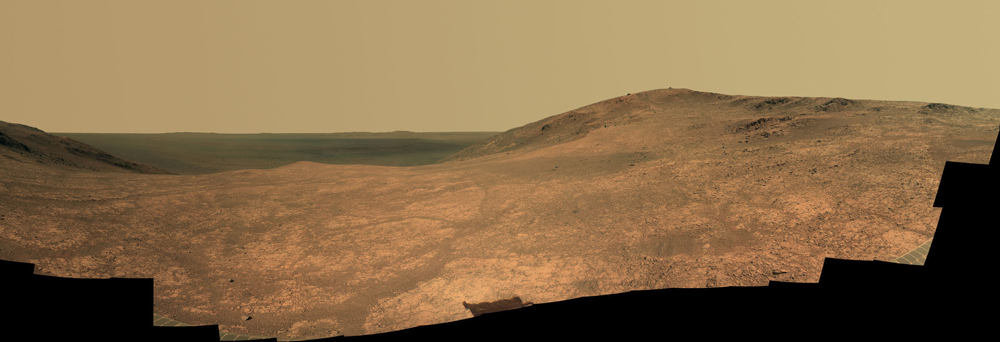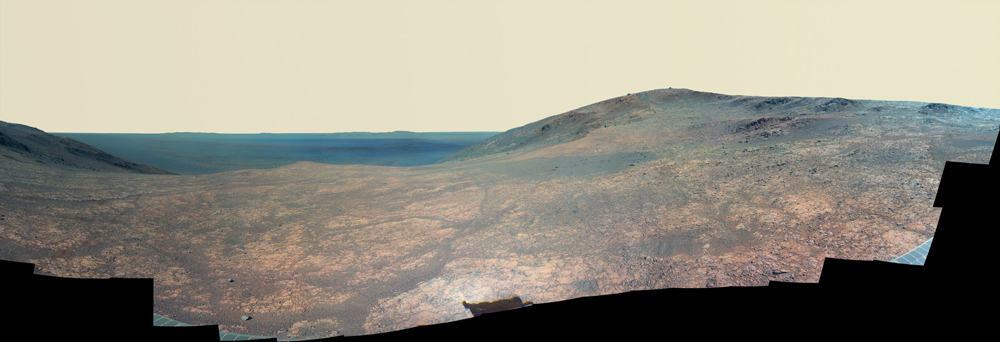
An epic Mars panorama shows the snaking valley that NASA's long-lived Opportunity rover has been exploring for the last year — and will likely soon leave behind.
The newly released photo — a composite of many images Opportunity captured in April and May — depicts Marathon Valley, a feature that cuts across the western rim of the 14-mile-wide (22 kilometers) Endeavour Crater.
Opportunity arrived in the valley in July 2015 to hunt for clay minerals, signs of which had been spotted from above by NASA's Mars Reconnaissance Orbiter. (Clay minerals form via the interaction of liquid water with rock, which makes them of special interest to the Opportunity team; the rover's mission aims to help tease out the history of liquid water on Mars.) [Latest Mars Rover Photos by Opportunity]
While doing this work in Marathon Valley, the rover encountered some curious red crumbly material. Opportunity's handlers used one of the robot's six wheels to scuff the stuff, exposing some fresh samples for study.
The results were intriguing, mission team members said.
"In the scuff, we found one of the highest sulfur contents that's been seen anywhere on Mars," Opportunity principal investigator Steve Squyres, of Cornell University in Ithaca, New York, said in a statement.
"There's strong evidence that, among other things, these altered zones have a lot of magnesium sulfate," Squyres added. "We don't think these altered zones are where the clay is, but magnesium sulfate is something you would expect to find precipitating from water. Fractures running through the bedrock, forming conduits through which water could flow and transport soluble materials, could alter the rock and create the pattern of red zones that we see."
Get the world’s most fascinating discoveries delivered straight to your inbox.
Such analyses may be some of the last work Opportunity does in Marathon Valley; it's about time for the rover to move along, Squyres said.
"We are wrapping up our last few activities in Marathon Valley, and before long we'll drive away, exiting along the southern wall of the valley and heading southeast," he said.
Marathon Valley got its name because Opportunity rolled into the region shortly after its odometer ticked past 26.219 miles (42.195 km) — the length of a marathon race.
As of Tuesday (June 14), the rover had covered a total of 26.59 miles (42.79 km) on the Red Planet, NASA officials said. No other vehicle has ever traveled farther on the surface of a world beyond Earth.
The golf-cart-size Opportunity landed on Mars in January 2004, a few weeks after its twin, Spirit. Both robots were tasked with three-month missions, but they kept exploring long after their warranties expired. Spirit was declared dead in March 2011, and Opportunity is still going strong today.
Follow Mike Wall on Twitter @michaeldwall and Google+. Follow us @Spacedotcom, Facebook or Google+. Originally published on Space.com.



